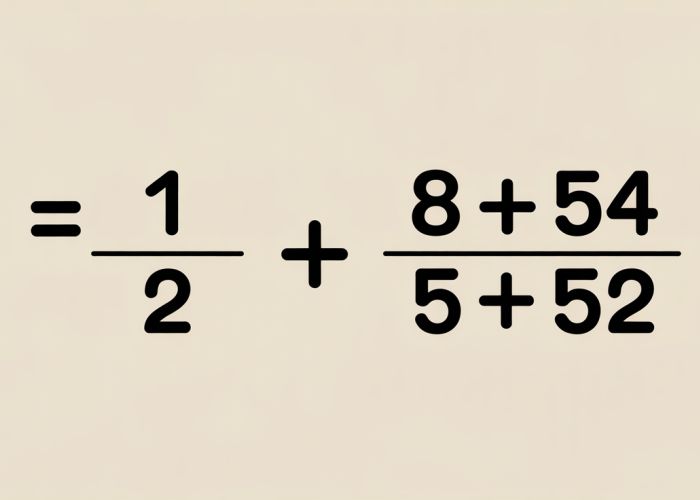Understanding exponent rules is fundamental to mastering algebra. The Khan Academy provides excellent resources for building this foundational knowledge, which directly impacts your ability to tackle more complex problems. One area where these rules come into play is simplifying negative exponents, a skill often tested in standardized assessments like the SAT. Many students struggle with negative exponents, but the process is often simpler than they initially expect. With the right techniques, advocated by experts like Barbara Liskov in her approach to problem-solving, simplifying negative exponents becomes an accessible skill.

Unlocking Negative Exponents: Your Simple Guide to Simplifying
This guide aims to break down negative exponents, making them easy to understand and work with. Our primary focus is on simplifying negative exponents, and we’ll use a step-by-step approach to get you comfortable with this concept.
What are Exponents? A Quick Recap
Before diving into the negative part, let’s refresh our understanding of regular exponents. An exponent tells us how many times to multiply a base number by itself.
- Base: The number being multiplied.
- Exponent: The small number written above and to the right of the base, indicating the number of times the base is multiplied.
For example, in 23, 2 is the base, and 3 is the exponent. This means 2 x 2 x 2 = 8.
Introducing Negative Exponents
So, what happens when the exponent is negative? A negative exponent doesn’t mean the result will be negative. Instead, it indicates a reciprocal. Specifically, a number raised to a negative exponent is equal to 1 divided by that number raised to the positive version of the exponent.
The Key Rule for Simplifying Negative Exponents
The golden rule for simplifying negative exponents is:
a-n = 1 / an
Where:
- ‘a’ is any non-zero number (the base).
- ‘n’ is the exponent.
This formula is the cornerstone of understanding and simplifying. In essence, you flip the base to the denominator of a fraction with 1 as the numerator and change the exponent to its positive equivalent.
Step-by-Step Examples
Let’s illustrate this with examples:
Example 1: 2-3
- Identify the base and exponent: Base = 2, Exponent = -3.
- Apply the rule: 2-3 = 1 / 23
- Calculate the positive exponent: 23 = 2 x 2 x 2 = 8
- Substitute back: 1 / 23 = 1 / 8
- Final simplified answer: 2-3 = 1/8
Example 2: 5-2
- Identify the base and exponent: Base = 5, Exponent = -2.
- Apply the rule: 5-2 = 1 / 52
- Calculate the positive exponent: 52 = 5 x 5 = 25
- Substitute back: 1 / 52 = 1 / 25
- Final simplified answer: 5-2 = 1/25
Example 3: (1/3)-2
This is slightly different as the base itself is a fraction. But the rule still applies.
- Identify the base and exponent: Base = 1/3, Exponent = -2.
- Apply the rule: (1/3)-2 = 1 / (1/3)2
- Calculate the positive exponent: (1/3)2 = (1/3) x (1/3) = 1/9
- Substitute back: 1 / (1/3)2 = 1 / (1/9)
- Dividing by a fraction: Remember that dividing by a fraction is the same as multiplying by its reciprocal. So, 1 / (1/9) = 1 * (9/1) = 9
- Final simplified answer: (1/3)-2 = 9
Another, perhaps easier, way to simplify (1/3)-2 is to recognize that taking the reciprocal of (1/3) changes it to 3. Therefore, (1/3)-2 = 32 = 9.
Dealing with Negative Exponents in the Denominator
What if a negative exponent is already in the denominator? The process is reversed.
The rule becomes:
1 / a-n = an
The negative exponent in the denominator means the base moves to the numerator with a positive exponent.
Example: 1 / 4-2
- Identify the situation: We have a negative exponent in the denominator.
- Apply the rule: 1 / 4-2 = 42
- Calculate: 42 = 4 x 4 = 16
- Final simplified answer: 1 / 4-2 = 16
Summary Table
Here’s a summary of the key rules:
| Rule | Explanation | Example |
|---|---|---|
| a-n = 1 / an | A negative exponent in the numerator becomes positive in the denominator. | 3-2 = 1/9 |
| 1 / a-n = an | A negative exponent in the denominator becomes positive in the numerator. | 1 / 2-3 = 8 |
Tips and Common Mistakes
- Don’t Confuse with Negative Numbers: a-n is not the same as -an. The negative sign applies only to the exponent, not the entire term.
- Zero as a Base: 0-n is undefined because you cannot divide by zero.
- Practice, Practice, Practice: The more you work with negative exponents, the easier they become. Try online exercises or create your own problems.
Complex Examples
Example 1: x-3 / y-2
- Apply the Rules: Move x-3 to the denominator and y-2 to the numerator.
x-3 / y-2 = y2 / x3
Example 2: (2a-1b2) / (4a2b-3)
- Rearrange and Simplify Constants: (2/4) (a-1 / a2) (b2 / b-3) = (1/2) (a-1 / a2) (b2 / b-3)
- Simplify ‘a’ terms: a-1 / a2 = a-1-2 = a-3. Place this in the denominator: 1 / (2a3)
- Simplify ‘b’ terms: b2 / b-3 = b2-(-3) = b5. Place this in the numerator: b5 / (2a3)
- Final Answer: b5 / (2a3)
So, that’s it for simplifying negative exponents! Hopefully, this guide has made things a little clearer. Now go forth and conquer those pesky exponents!